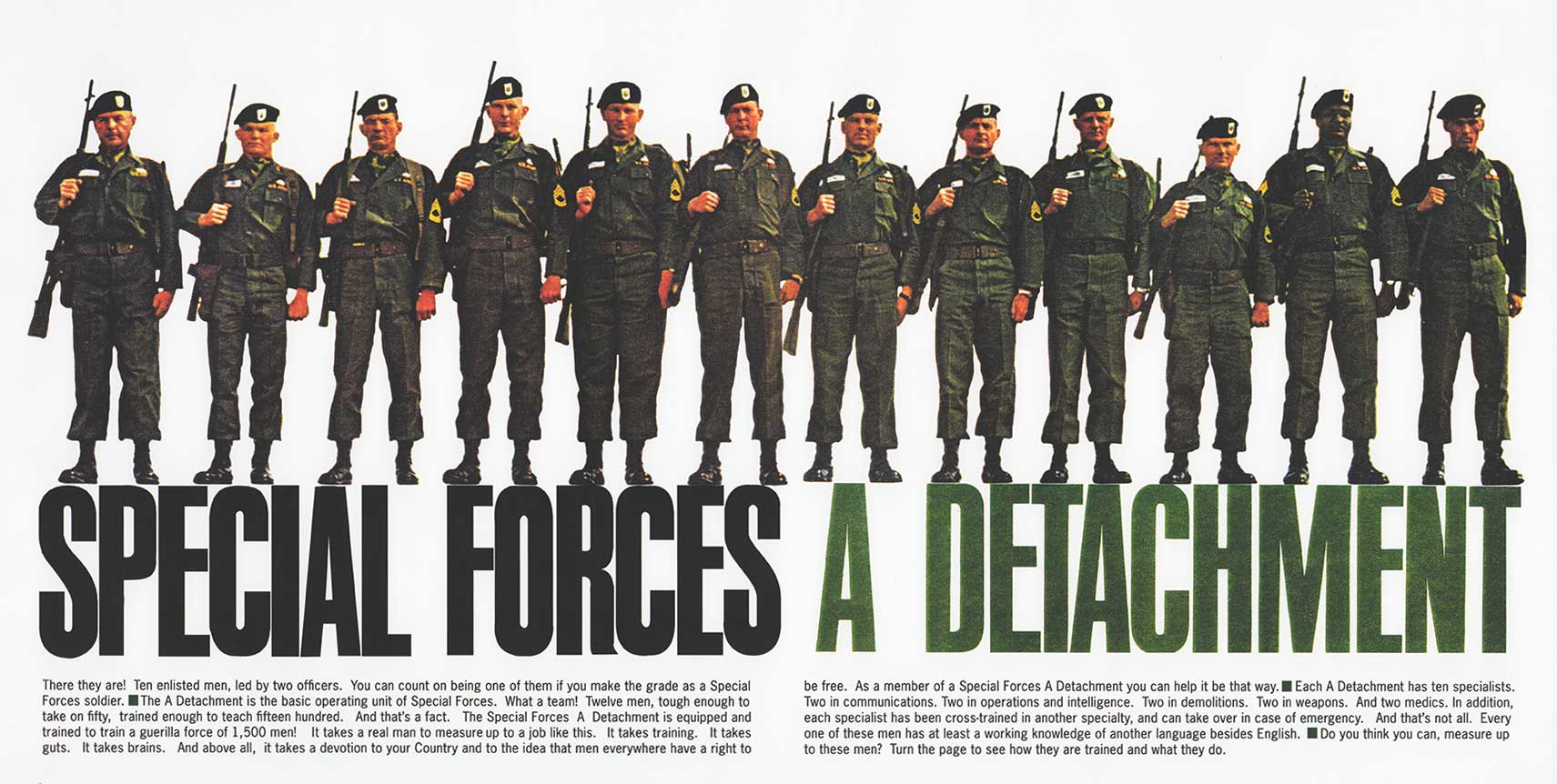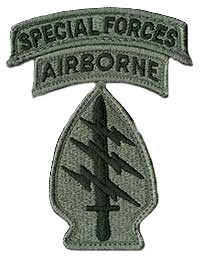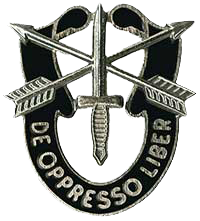DOWNLOAD
Today, the Special Forces (SF) Operational Detachment-Alpha (ODA) consists of twelve soldiers. However, that has not always been the case. Its number of personnel has ranged from twelve to fifteen, depending upon era and contemporary doctrine and force structure requirements. What follows is a brief look at the historic organization of the lowest SF unit of action, the ODA. This study starts even before the creation of SF in 1952 by going back to World War II, specifically, the Office of Strategic Services (OSS) Operational Group (OG) section.
Created on 13 June 1942, the OSS was a separate, joint military service that reported directly to the Joint Chiefs of Staff. Its primary mission was to collect, analyze, and disseminate intelligence. The second was to conduct unconventional warfare (UW). The OG was one of the key OSS UW elements.

On 4 May 1943, the OSS activated the OG Branch as a “separate tactical unit” within the OSS.1 Although it was not a U.S. Army element, it was manned almost exclusively with Army personnel detailed to the OSS who possessed the cultural background and spoke the languages of the areas to be infiltrated. The OGs trained and were employed as small groups. Their mission was to infiltrate enemy-occupied areas to harass the enemy and to be the “operational nuclei of guerrilla units” through organizing, training, equipping, and advising them.2 OGs operated in France, Norway, Yugoslavia, Italy, Greece, Burma, and China.
The basic organizational unit in the OG Branch was an Operational Group. An OG fluctuated in size throughout the war but was designed to operate in two independent sections. The main structure for how the OG operated in the field, was the section which could be further divided into two semi-independent squads. The final OG table of organization and equipment (TO&E), dated 20 February 1945, had a fifteen-man section comprised of a commanding officer (usually a Lieutenant), a senior non-commissioned officer (NCO), a medical sergeant, two radio operators, two squad sergeants, and eight riflemen.3 This structure later became the basis for the ODA.
OSS Operational Group Section, 1945
After World War II, the OSS disbanded on 1 October 1945, and the Army similarly deactivated its special operations units. Within five years, however, the U.S. was again at war. Korea, the first major flare-up of the Cold War, highlighted that the Army needed to recreate special operations units. Therefore, U.S. Army leaders looked to create an unconventional warfare element to work with guerrilla forces. Rather than invent a new structure, they looked at the OG section as a model.


One of the earliest field manuals (FM) on unconventional warfare, which provided the doctrinal foundation for Army SF, was FM 31-21: Organization and Conduct of Guerrilla Warfare, dated October 1951. Its author was Colonel (COL) Russell W. Volckmann, leader of Philippine guerrillas on Luzon during World War II. Although COL Volckmann had extensive UW experience, his Philippine formations did not have a codified structure. He therefore looked to the OSS OG, a TO&E element that did. COL Volckmann even borrowed the OSS nomenclature in FM 31-21, when he called for an “Operational Group” of unspecified size, composed of “specially qualified military personnel in uniform, organized, trained, and equipped to operate as teams within enemy territory,” to be the main element to form and assist guerrilla forces.4
The proposed TO&E 33-510, dated 14 May 1952, set the organization for an FA Team (no acronym assigned but in current parlance, an ODA). Like the OSS OG section, it was fifteen personnel comprised as follows: a Detachment Commander (O-3), Executive Officer (XO) (Lieutenant), Platoon Sergeant (E-7), Medic (E-7), two Leader Heavy Weapons (E-6), two Leader Light Weapons (E-6), four Demolition Specialists (E-5), and three Radio Operators (E-5).5 This same organization was reflected in FM 31-20: U.S. Army Special Forces Group (Airborne), dated August 1955.6
FA Team, 1952
The first change to the ODA structure came in Army FM 31-21: Guerrilla Warfare and Special Forces Operations, dated 8 May 1958. This manual retained the fifteen-man construct but changed the rank structure and job descriptions of the FA team. It now had a commander (O-3), XO (Lieutenant), Team Sergeant (E-8), Medic (E-8), four Weapons Specialists (E-7), four Demolition Specialists (Specialist 2), one Radio Repairman (E-5), one Radio Operator (E-5), and one Radio Operator (Specialist 3).7
FA Team, 1958
The first personnel reduction came with TO&E 31-107E, dated 25 September 1963. The FA team, renamed to ODA, was changed to twelve soldiers and restructured the ranks. It had a commander (O-3), an XO (Lieutenant), an Operations Sergeant (E-8), a Heavy Weapons Leader (E-7), an Intelligence Sergeant (E-7), a Light Weapons Leader (E-7), a Medical Specialist (E-7), and Radio Operator Supervisor (E-7), an Assistant Medical Specialist and Demolitions Sergeant (E-6), and a Chief Radio Operator and Combat Demolition Specialist (E-5).8 TO&E 31-107G, dated 28 June 1968, kept the same general organization as the 1963 version but increased the rank of the Demolitions Sergeant, now called a Special Forces Engineer Sergeant, to an E-7, and renamed the E-5 Combat Demolition Specialist to a Special Forces Engineer.9
ODA, 1963
The twelve-man ODA lasted until TO&E 31-107H, dated 10 June 1970. This document increased the ODA structure to fourteen by adding a Supply Sergeant (E-7) and an Assistant Operations/Intelligence Sergeant (E-6).10 A subsequent change to this TO&E on 1 March 1974 reduced the ODA to thirteen men by removing the E-7 Radio Operations Supervisor.11 Another change on 1 September 1974 brought the ODA back down to twelve by removing the E-7 Supply Sergeant (E-7) and Assistant Operations/Intelligence Sergeant (E-6) but bringing back the Radio Operations Supervisor (E-7). It also changed the Intelligence Sergeant position to an Assistant Operations Sergeant.12
ODA, 1971
The final significant change occurred in 1984 when the first SF warrant officers (WO) began to replace lieutenants on ODAs. This change was motivated by a study conducted by COLs Charles A. Beckwith and J.H. “Scotty” Crerar, who were concerned about the lack of continuity and competency within the ODAs. In their estimation, the seconds-in-command, being lieutenants, were still learning their profession; had spent little time on the team; and did not have enough team time to gain adequate experience and knowledge to become an ODA commander. In COL Crerar’s words, “justly or not [lieutenants] were viewed as burdens on their detachments,” necessitating replacing them with a more experienced warrant officer that could provide more seasoned leadership to the ODA.13
The ODA structure has not changed since 1984. Currently it is as follows: Detachment Commander (O-3), Assistant Detachment Commander (Chief Warrant Officer 2), Operations Sergeant (E-8), Operations/Intelligence Sergeant, Senior Weapons Sergeant, Senior Engineer Sergeant, Senior Medical Sergeant, Senior Communications Sergeant (E-7), and Weapons Sergeant, Engineer Sergeant, Medical Sergeant, and Communications Sergeant (E-6).14
ODA, 2014
As this brief article has detailed, the ODA structure has its roots in the final version of the OSS OG section, which developed based on personnel availability and operational requirements. Since 1952, the SF ODA has had numerous changes to its personnel and rank structure, albeit with a few constants: a captain as commander, a second-in-command (lieutenant and then warrant officer), a senior NCO, and medical, communications, weapons, and demolition (engineer) personnel. With the ODA having fluctuated between twelve and fifteen soldiers, it has historically been treated as a “living” structure and subject to change based on existing requirements.

